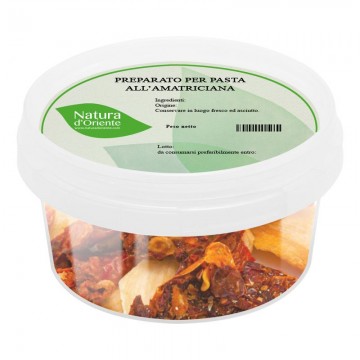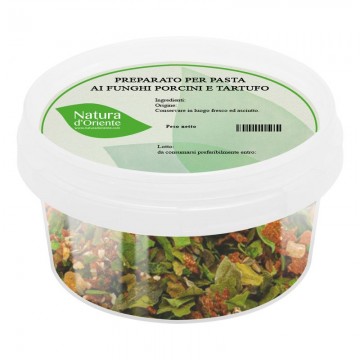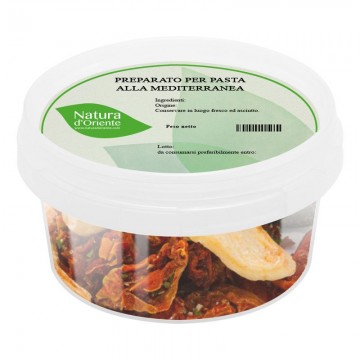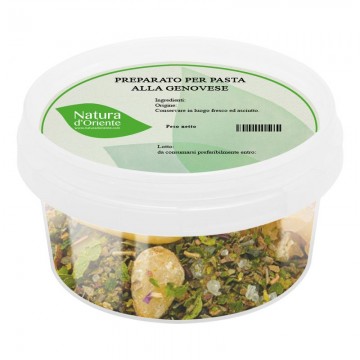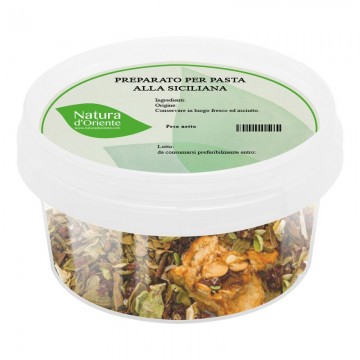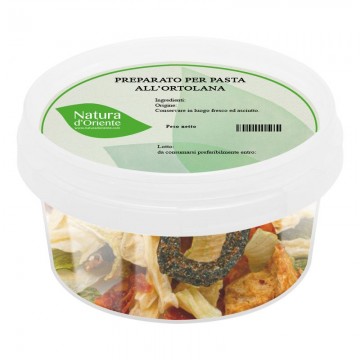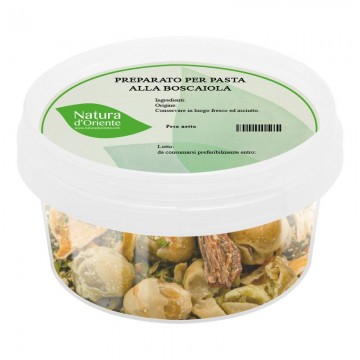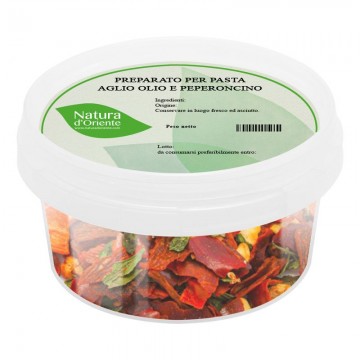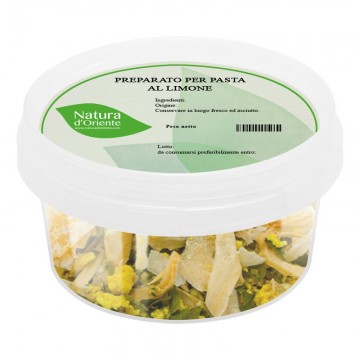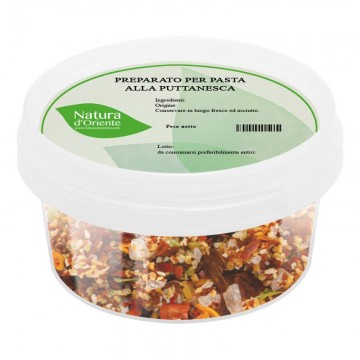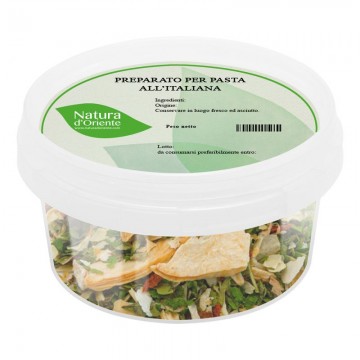The walnut sauce is a typical condiment of Ligurian cuisine based on walnuts, grated cheese and bread crumbs. It is one of the most popular pounded sauces, second in the Ligurian tradition only to the famous Genoese pesto.
How to use our preparation for pasta with walnuts
In a large and deep frying pan, heat extra virgin olive oil, 50 ml of water and add two teaspoons of walnut pasta mix.
Cook over low heat for 15 minutes until the water evaporates, the sauce will take on a slightly thick consistency. Meanwhile, cook the pasta, once ready, drain and toss in the pan with the sauce. Serve piping hot with a generous sprinkling of Parmesan.
The recipe of the traditional Ligurian walnut sauce
As always, if you do a search you will find that there are multiple versions of this recipe, for example there are those who add white pepper to this sauce and even those who add chilli. We can perhaps use as a reference point the ingredients that are invariably found wherever the recipe appears, in this case we can say that in addition to the aforementioned: grated parmesan (or parmesan), bread and walnuts that apparently no one would dream of excluding and calling again the recipe Ligurian walnut sauce, garlic, milk and pine nuts must be part of the ingredients of the recipe. Yet we have found versions of the recipe even in sites entirely dedicated to the Ligurian tradition where pine nuts are not among the ingredients.
The history of Ligurian walnut sauce
No one knows the origin of walnut sauce with certainty, we know that the recipe is ancient, more than that of Genoese pesto based on basil, probably, certainly medieval, there are hints in documents relating to the '300, it is mentioned more widely in documents of the' 500. A school of thought wants it imported from Persia at the time of the maritime republic of Genoa, but in reality there is no certainty it is more a conjecture based on the fact that in fact it is known that in Persia there was a walnut sauce since ancient times and knowing of the contacts of the Genoese merchants with that country seems a plausible reconstruction.
Others however point out that walnut trees were common in Liguria and therefore it is equally possible that it may be the result of the ability of Ligurian women to exploit local products and therefore have a native origin.
Curiosities about Ligurian walnut sauce
A common origin with pesto alla genovese is possible if you think that even in the first version of pesto alla genovese together with basil there were walnuts and pine nuts would be an addition posthumous of Levantine inspiration.
For just over a year, a funny hoax has spread about the decision of the World Heritage Fund (the UNESCO treasury) to declare Ligurian walnut sauce an intangible heritage of humanity and not the illustrious Genoese brother, the alleged motivation is also credible: the purpose of UNESCO and its fund is to ensure that certain cultural traditions are not lost, the international success, also due to good marketing, of pesto alla Genoese seems to put it safe. The fact that the news was released on April 1, 2020 should have made the many sites that recklessly picked it up and still keep it online. In reality, it was probably a mockery of the efforts that the Genoese and others have been making since 2019 when they proposed pesto to make it declared an intangible heritage of humanity. The authors of the joke probably did not foresee that after the first moment of loss, pride would prevail in perpetuating the hoax, it is a pity that there is no trace of it on the official website, nor in any online list of the Intangible cultural heritage.
The first name of the walnut sauce was walnut garlic or white garlic, demonstrating that garlic is one of the main and inevitable ingredients of the original recipe.
The pasta traditionally served with walnut sauce are pansoti, a type of fresh pasta filled with "herbs to cook", but it goes well with and is appreciated with practically any cut, even dry pasta. In particular with the trofie. The widespread walnut sauce was also widespread in Persia and is still today in the Balkans, in those countries it is used as a condiment for boiled meats.





 No reward points for this product.
No reward points for this product.
